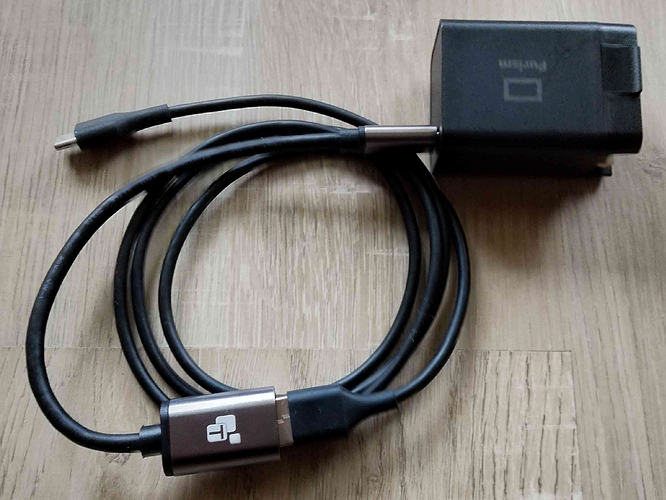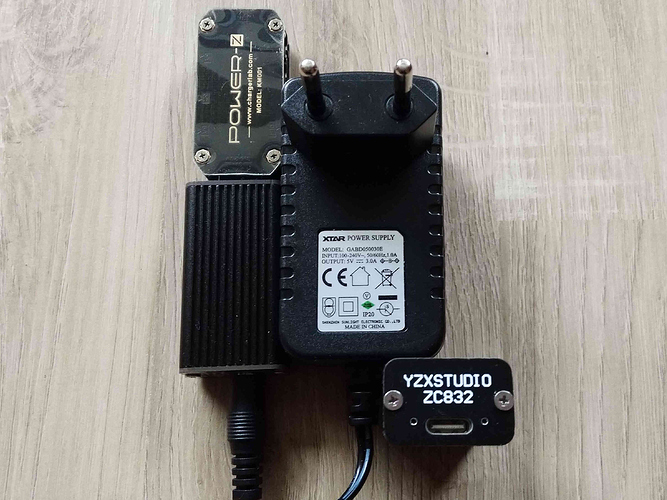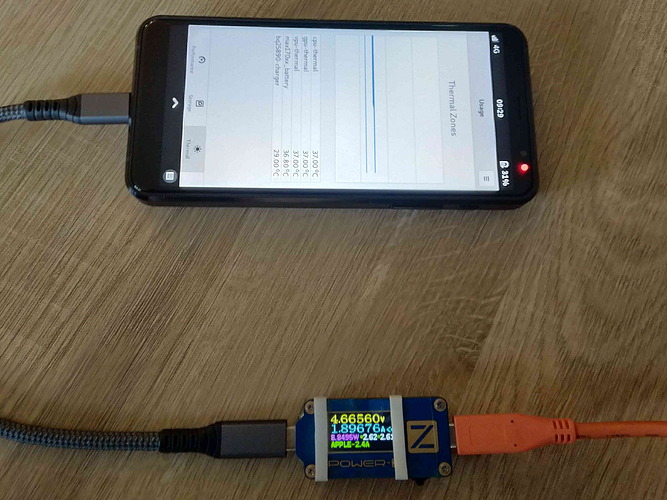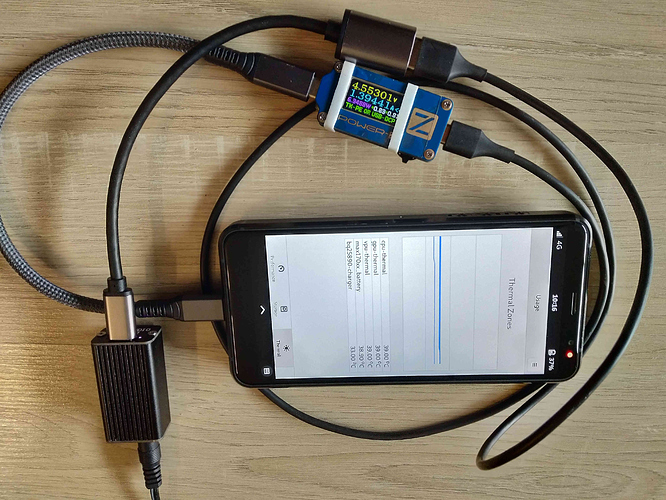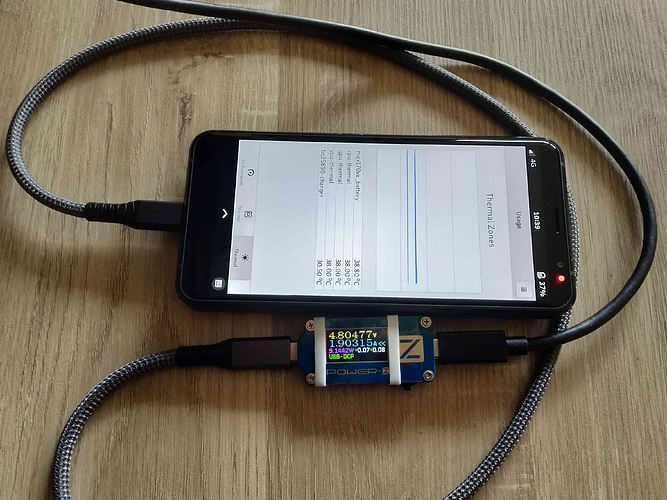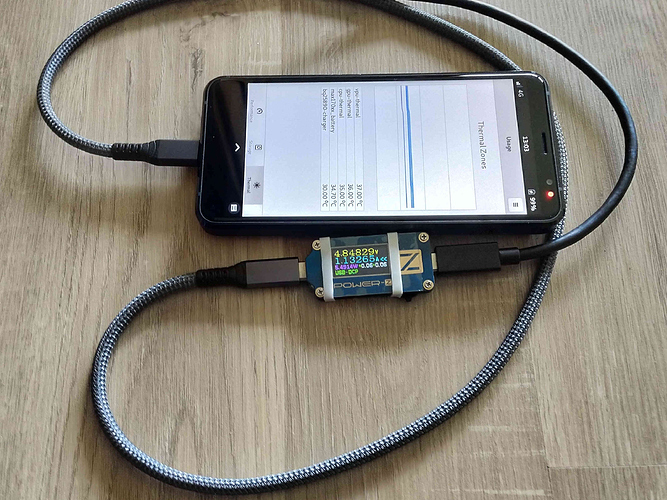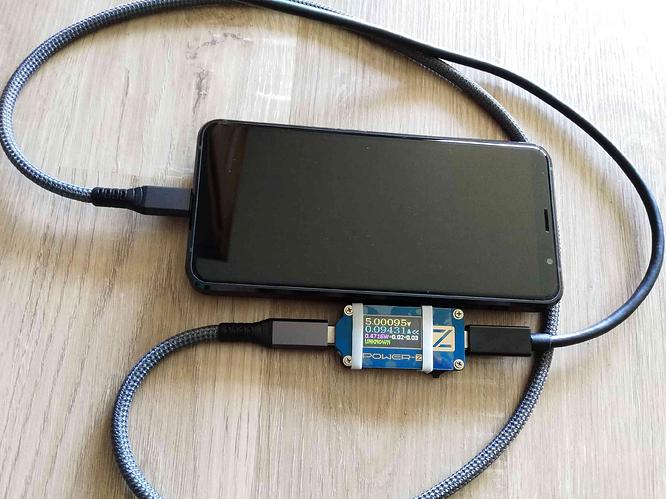Yes, nobody should experiment with above 3.0A and even with the power supplies rated at 3.0A, while closely related to your post/intentions and in order to further decrease usually (as accustomed) measured charging temperature, simplest test would be to involve adequate cable+adapter (as shown in combo with the simple USB2.0 cable instead of …) where at least one (or both cable+adapter) contains 56kΩ pull-up resistor (not to involve here any extensive discussion about compliant USB-C to USB-C cables):
EDIT: For extended overview (ensuring/blocking to get output of 5.00V only), below picture shows small full protocol devices based around SW2305 controller (both of them). Sharing here while it is actually possessing very rare feature: its charging controller can recognize and work from provided 5V input and deliver output of 5.06V (without having any issues on transporting up to 3.0A, yet I do not recall that I tested ZC832 with my Librem 5):
EDIT II: Actually ZC832 (as above pictured power supply combo) charges well but the negotiated protocol isn’t my favorite (and therefore I’m not using it for this purpose, probably just because I cannot help myself in order to simply accept this shown negotiation protocol as some kind of advantage):
EDIT III: @amosbatto, as somehow “explained” above here is picture showing that charging current (amperage) can be decreased (relating to the same power supply in usage):
EDIT IV: Concluding here with my main reference numbers (when screen on, the way I like to see things when charging my Librem 5, as and when charging it for real, directly from my favorite power supply):
After few hours used PD power supply have gotten there (as mentioned above), reaching 5.00V (with Librem 5 turned off and battery calibrated full at 4.20V, it was just about right time to disconnect used charging cables):
